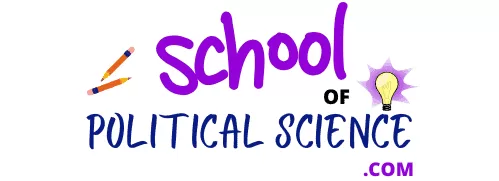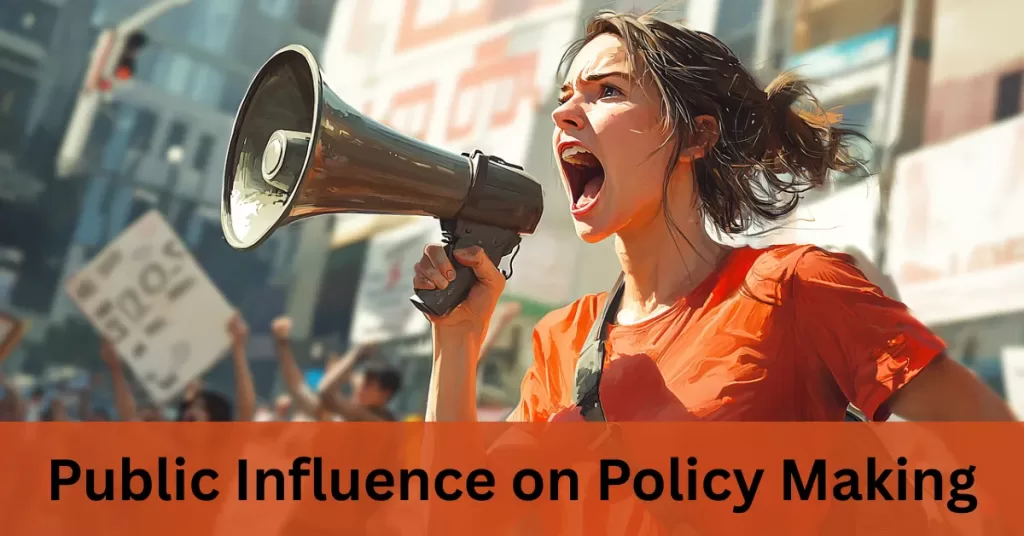Have you ever wondered how governments make decisions that impact your daily life? Whether it’s about education, healthcare, or economic policies, every major decision follows a structured process.
Understanding the policy making process helps us see how governments function and why certain policies exist. If you’re studying public administration, learning this process is key to understanding governance and decision-making.
Must Read- The Role of Bureaucracy in Policy Making
What is Policy Making in Public Administration?
Policy making in public administration is the systematic process governments use to develop and implement laws, regulations, and programs. It ensures that decisions are made thoughtfully, based on data, public needs, and available resources.
Policies help determine how resources are allocated, how government services operate, and how societal issues are addressed. Without a structured policy-making process, governance would be chaotic and ineffective.
Simply put, policy making connects public concerns with government actions. It’s not just about making decisions—it’s about making well-informed, strategic choices that impact people’s lives.
Must Read- 12 Key Characteristics of Public Policy: Understanding Its Impact & Importance
The 5 Key Stages of the Policy Making Process
The policy making process consists of several key steps, each essential for developing effective policies. Let’s explore them in detail.
1. Problem Identification and Agenda Setting
Every policy begins with recognizing a problem. It could be rising unemployment, pollution, or inadequate healthcare. The government must identify and prioritize issues that require immediate attention.
Agenda setting is influenced by public opinion, political leadership, media coverage, and expert analysis. Some issues gain priority because they have widespread public support or serious economic consequences.
For example, if inflation is rising, the government may prioritize policies to stabilize the economy. Similarly, if students protest against poor education quality, the government might consider educational reforms.
2. Policy Formulation
Once an issue is identified, the government explores different solutions. This stage involves research, expert consultations, and drafting proposals. Policymakers analyze various options and select the most viable one.
Policy formulation is a collaborative effort. Legislators, researchers, advocacy groups, and government officials work together to design policies that are practical, cost-effective, and efficient.
For example, if inflation is a concern, potential solutions might include tax adjustments, interest rate modifications, or increased production. Economists and policymakers evaluate the pros and cons of each approach before finalizing a plan.
3. Policy Adoption
After a policy is proposed, it must be approved by the government. The approval process varies depending on a country’s political system. In democratic nations, policies typically require legislative approval, while in authoritarian systems, a small group of officials may decide.
Adopting a policy often involves negotiations among politicians, government agencies, and interest groups. For instance, a tax reform policy in a democracy may require parliamentary debates and voting, while in a centralized system, it may be implemented by executive order.
4. Policy Implementation
Once approved, policies must be put into action. This is done by government agencies, local authorities, and other institutions. Implementation involves allocating budgets, hiring personnel, and establishing administrative structures.
However, implementation can be challenging. Factors such as lack of funding, bureaucratic inefficiencies, and public resistance can create roadblocks.
For example, if a government introduces a new healthcare policy, hospitals and clinics must adjust their operations. Officials may need to train medical staff, distribute resources, and inform the public about the changes.
5. Policy Evaluation
Once a policy is in place, it must be assessed to determine its effectiveness. Policymakers collect data, conduct surveys, and analyze results to see if the policy is achieving its goals. If necessary, adjustments are made.
Evaluation is critical because ineffective policies can waste resources and fail to address the intended issue. If an unemployment relief program is not reaching enough people, for example, the government may need to revise eligibility criteria or improve outreach efforts.
Must Read- Public Policy Implementation: A Comprehensive Guide
Factors Influencing the Policy Making Process
Several factors shape the policy making process in public administration. Key influences include:
1. Public Opinion
Citizens’ concerns, protests, and social movements can impact policy decisions. Governments often prioritize issues with strong public support.
2. Political Ideology
A government’s policies reflect its beliefs. Conservative governments may focus on free-market solutions, while progressive ones may emphasize social welfare programs.
3. Economic Conditions
A country’s financial situation affects policymaking. During economic downturns, governments may introduce spending cuts, while economic booms may allow for increased public investment.
4. International Influences
Global organizations like the United Nations or World Bank, as well as international trade agreements, influence domestic policy decisions.
5. Technological Advancements
Innovations impact policymaking, such as regulations on artificial intelligence, cybersecurity laws, and digital governance.
6. Government Structure
The efficiency of a government’s institutions determines how well policies are created and implemented. Weak institutions may struggle with corruption and inefficiency.
Must Read– Importance of Public Policy-10 Points Need to Know
Challenges in the Policy Making Process
Even though there is a structured process, policy making faces several obstacles:
- Bureaucratic Delays: Excessive paperwork, lengthy approval processes, and rigid administrative structures can slow down policy implementation.
- Corruption and Political Interests: Policies sometimes serve special interest groups instead of the public. Lobbying, favoritism, and bribery can result in biased decisions.
- Implementation Issues: Poor execution can lead to policy failures. Weak coordination between agencies, lack of trained personnel, and mismanagement of resources are common challenges.
- Public Resistance: People may oppose policies they perceive as unfair. This can lead to protests, legal challenges, or political pushback. Governments must engage with communities to gain support.
- Limited Resources: Budget constraints can hinder policy enforcement. Without sufficient funding, policies may be incomplete or ineffective.
- Conflicting Interests: Policymakers, businesses, and the public often have differing views on a policy. Disagreements can slow down or even block policy progress.
Must Read Guide: An In-Depth Look at Public Policy Issues and 5 Examples
Conclusion
The policy making process is a crucial function of public administration. It follows a structured path from identifying problems to evaluating solutions. Understanding this process helps students, policymakers, and citizens actively participate in governance and contribute to better policies.
As you continue studying public administration, consider what policies you would create to solve real-world problems. What issue do you believe deserves urgent government attention? Share your thoughts in the comments!
Must Read- The Crucial Link Between Public Policy and Administration
Frequently Asked Questions (FAQs)
1. Why is policy making important in public administration?
Policy making is essential because it helps governments address societal needs, allocate resources effectively, and ensure organized governance.
2. What are the main stages of the policy making process?
The key stages are problem identification, policy formulation, policy adoption, policy implementation, and policy evaluation.
3. What challenges do policymakers face?
Common challenges include bureaucratic delays, corruption, lack of funding, public opposition, and inefficient implementation.
4. How does public opinion influence policy making?
Governments often prioritize policies that receive strong public support, as citizen engagement can shape political decisions and government actions.
5. Can policies be changed after implementation?
Yes, policies are regularly reviewed and updated based on evaluation results, public feedback, and changing societal needs.
References
- Dye, T. R. (2016). Understanding Public Policy. Pearson.
- Kraft, M. E., & Furlong, S. R. (2017). Public Policy: Politics, Analysis, and Alternatives. CQ Press.
- Peters, B. G. (2018). American Public Policy: Promise and Performance. CQ Press.

